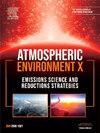Improving the comparability of FFF-3D printing emission data by adjustment of the set extruder temperature
Abstract
Fused filament fabrication (FFF) is a material extrusion-based technique often used in desktop 3D printers. Polymeric filaments are melted and are extruded through a heated nozzle to form a 3D object in layers. The extruder temperature is therefore a key parameter for a successful print job but also one of the main emission driving factors as harmful pollutants (e.g., ultrafine particles) are formed by thermal polymer degradation. The awareness of potential health risks has increased the number of emission studies in the past years. However, studies usually refer their calculated emission data to the printer set extruder temperature for comparison purposes. In this study, we used a thermocouple and an infrared camera to measure the actual extruder temperature and found significant temperature deviations to the displayed set temperature among printer models. Our result shows that printing the same filament feedstocks with three different printer models and with identical printer set temperature resulted in a variation in particle emission of around two orders of magnitude. A temperature adjustment has reduced the variation to approx. one order of magnitude. Thus, it is necessary to refer the measured emission data to the actual extruder temperature as it poses a more accurate comparison parameter for evaluation of the indoor air quality in user scenarios or for health risk assessments.


 求助内容:
求助内容: 应助结果提醒方式:
应助结果提醒方式:


